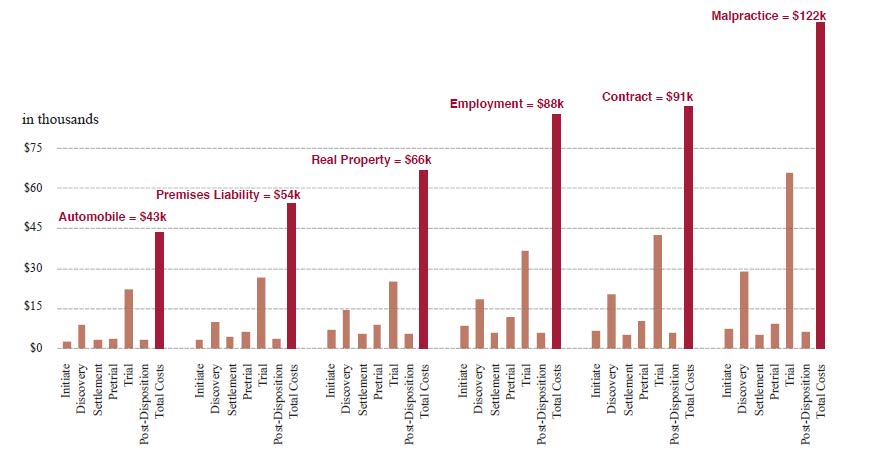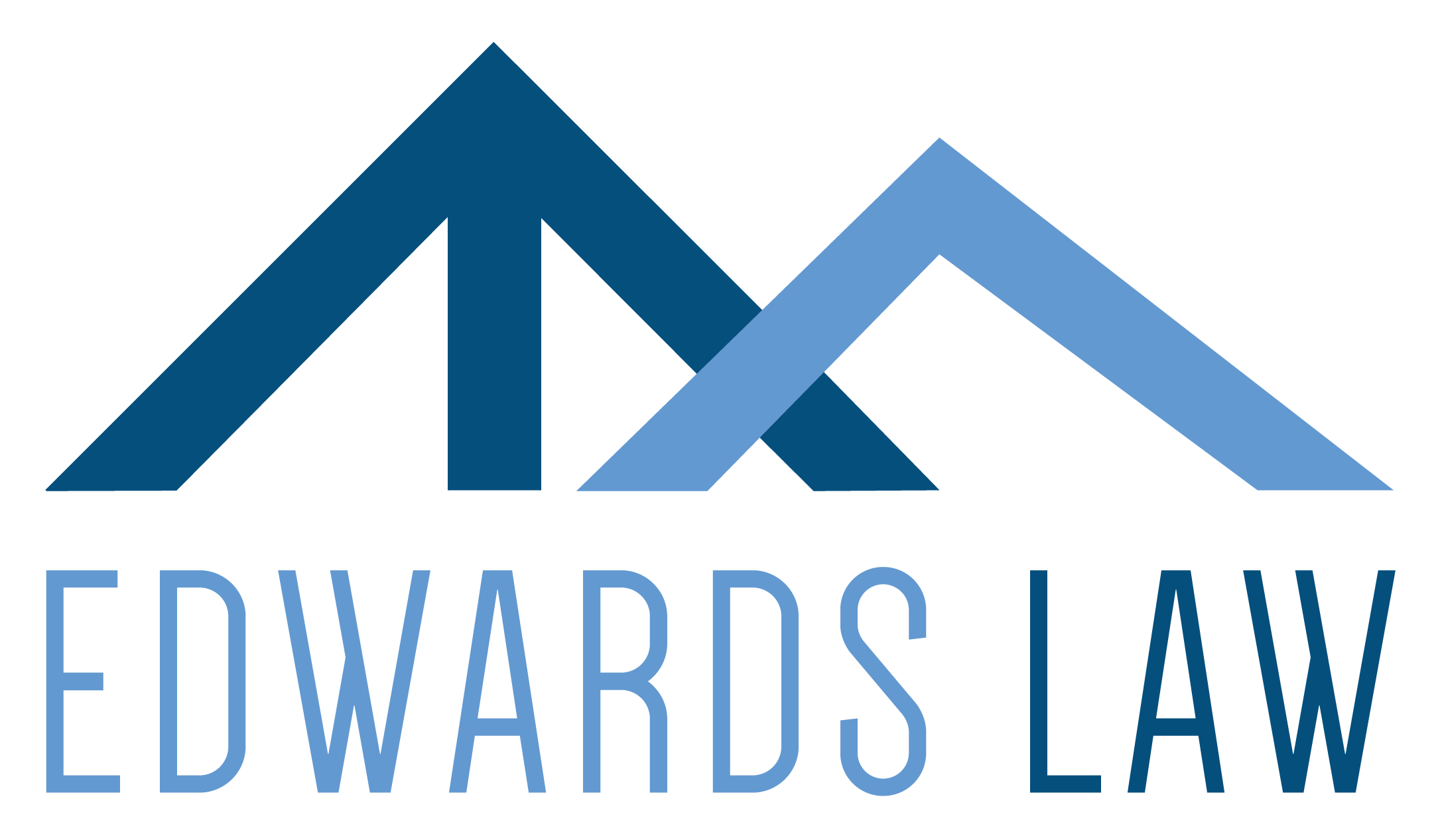
26 May Planning for Litigation – Using a Litigation Budget
In last week’s blog we discussed the importance of legal project management. This week we are honing in on an important part of legal project management – creating and maintaining a litigation budget.
What is the Cost of Litigation?
According to the National Center for State Courts (NCSC), the median cost of an average state court litigation concerning a contract dispute is $91,000. The fees and costs for an average real property litigation case are not much lower, coming in at $66,000, and a premises liability litigation case averaging $54,000. The NCSC study found that, across all case type categories, the highest litigation costs are incurred during discovery and trial. For example, the NCSC study found that, while a simple automobile case may resolve quickly after case initiation and result in under $10,000 in litigation fees/costs, the total litigation fees and costs for the same case could exceed $100,000 (per side!) if the case went to trial.
While no business plans on litigating a contract or real estate dispute, sometimes you have no choice, particularly if you are served with a complaint. If you or your business is not prepared to carry these types of costs, it could mean the difference between your company flourishing or going out of business.
Thinking About Your Business’s Values and Goals
Before preparing a litigation budget, you must have a strong grasp on what is important to your company and how much it is worth to the company to protect those values. For example, what value, if any, do you place on the lost productivity you and other personnel in your organization will suffer while distracted from regular work by litigation? Litigation will necessarily require you and/or your staff to spend much time on gathering information, attending litigation meetings, communicating with your attorney, preparing for and attending depositions, court hearings, trial—the list is long.
Also, what value, if any, do you place on the additional stress that you and others in your company will incur while the dispute is pending?
And what value, if any, does your business place on the risk that it will lose a valuable business relationship, or suffer some loss of reputation, due to protracted litigation?
Depending on your answers to these questions, your business may want to place a number on the value of avoiding litigation altogether. In other words, how much would your business be willing to pay, simply to avoid litigation or its risk? Using this number as a guide, your business may want to consider investing some money into revising or altogether replacing its current business contracts (such as non-compete agreements and nondisclosure agreements), to lower the chances of being sued or having to sue. This number can also be used to create a “litigation reserve,” so that the business has the proper funds to settle a dispute, via mediation or otherwise, before costly litigation ensues.
Preparing a Litigation Budget
Legal fees for a particular case are mainly a function of two variables: the hourly rate and the number of hours worked. Seems simple, but estimating the total in legal fees for litigation is a complex and challenging task. The NCSC study points out some of the challenges of estimating costs, including numerous factors influencing attorney time and money spent in each case and the difficulty of determining these costs with precision.
Putting aside the “hourly rate” side of the equation (which will depend on the attorney you choose to work with and the value you place in choosing a more or less experienced attorney), the number of hours required to handle a particular case will depend on the type of case and the facts of the case (i.e., what exposure your company might have if it’s in breach or otherwise in the wrong). Here’s a sample of a litigation budget for a fairly straightforward breach of contract case concerning a commercial landlord/tenant contract, with an hourly attorney rate of $300 and an hourly paralegal rate of $90:

Sample Litigation Budget, Edwards Law PLLC Copyright 2017
Once the hours have been budgeted, it is simply a matter of plugging in the applicable hourly rates to determine the actual case budget in dollars.
Please notice the fees are categorized according to the particular stage of litigation. Setting out a budget in this way is helpful, when determining if and when settlement is appropriate or necessary. The earlier you and your company decide to settle, the less litigation will cost.
This budget should be updated periodically (every ninety days normally is a reasonable updating period) and actual expenditures should at this time be compared to budgeted amounts.
Obviously, the amounts expended will vary from the estimates, with this variance depending greatly on what the opposition does and the court’s rulings (or delays in ruling) at various points during the case.
It is impossible to provide a completely accurate estimate of the costs of litigation at the outset. This is not to say the budget is not important; without it, there is no economic basis upon which to make decisions regarding settlement and strategy.
In addition to using the budget in considering settlement, some risk analysis must be undertaken to determine the likelihood of various results. Only when the forecasted costs and fees and the likely outcome are viewed together will your attorney be in a position to advise you whether settlement or trial is dictated by the economics. Without this upfront analysis, your company may reach the pre-trial stage, only to realize that even the best outcome will not justify the expenditures of time and money necessary to achieve it.
Finally, keep in mind that while budgets can be used to project costs and make decisions during the course of the case, budgets cannot be allowed to dictate strategy. Sometimes, departure from forecasted budgets becomes necessary, requiring you and your business to properly allocate resources necessary to advocate the cause.
Conclusion
It is possible to develop a realistic budget for each of the various types of litigations. While such a budget should not be “carved in stone”—as unexpected complexities or difficulties may arise in the seemingly simplest of cases—it can and should be followed as scrupulously as possible. Contact Edwards Law today if you are interested in preparing a litigation budget, or just need help putting a price tag on what it’s worth to your company to avoid litigation. The first consultation is free, so you have nothing to lose.


No Comments